The natural landscape here boasts a harmonious beauty, with lush terraced fields stretching amidst enveloping mountain ranges. Visitors are often captivated by the serene and pristine ambiance, reminiscent of the idyllic countryside.
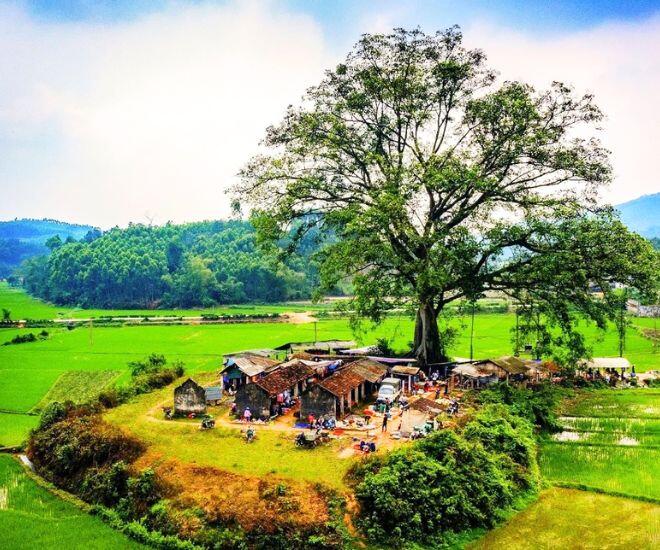
According to observations from travelers, the central banyan tree of the market exhibits signs of aging, with one of its large branches broken due to a lightning strike during a storm. Nonetheless, the locals and visitors alike cherish the primitive beauty and historical value of this tree as a witness to the region’s history.
A Hundred-Year-Old Market’s Historical Journey
Tuân Lộ Banyan Tree Market has a long history, intertwined with the Tay and Dao ethnic groups’ pioneering efforts in developing Sơn Dương. Locals share that the market has existed for hundreds of years, initially serving as a small-scale venue for bartering agricultural produce among families within the village.
As time progressed, the market expanded alongside the region’s transportation and economic developments. Over time, it transformed into a significant periodic market for the entire area. The market convenes on the 2nd, 7th, 12th, 17th, 22nd, and 27th of every lunar month, starting early in the morning and lasting until noon.
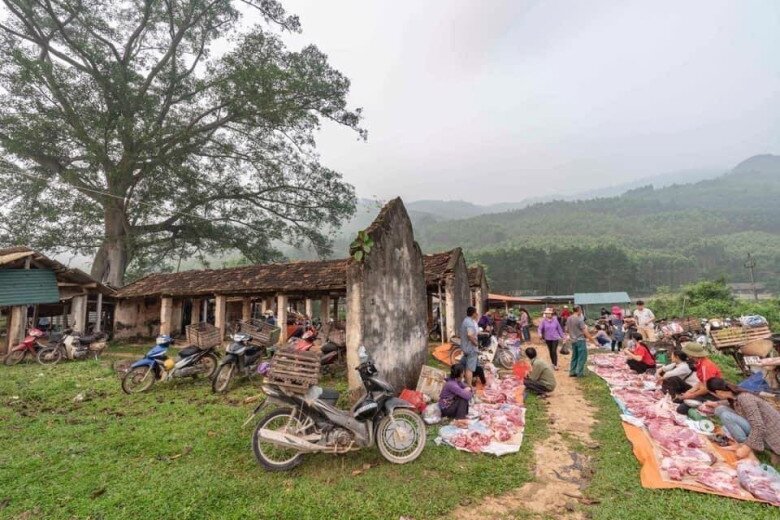
Despite enduring various vicissitudes, including the challenging period during the Covid-19 pandemic, which led to a noticeable decline in visitors, the Tuân Lộ Banyan Tree Market has resiliently preserved its primitive charm. It has successfully resisted the excessive commercialization evident in many other tourist markets.
Rustic Specialties Unique to the Countryside
The market’s primary allure lies in its diverse range of local specialties, reflecting the distinctive traits of Tuyên Quang’s mountainous region.
Agricultural Produce and Handicrafts
Strolling through the market, visitors frequently encounter stalls brimming with fresh wild vegetables like rau sắng and rau ngót rừng—characteristic flavors of Northern Vietnam’s mountains, rarely found in urban markets. Additionally, local tubers such as khoai sọ, sắn dây, and măng le are on offer, sourced directly from the surrounding forests.
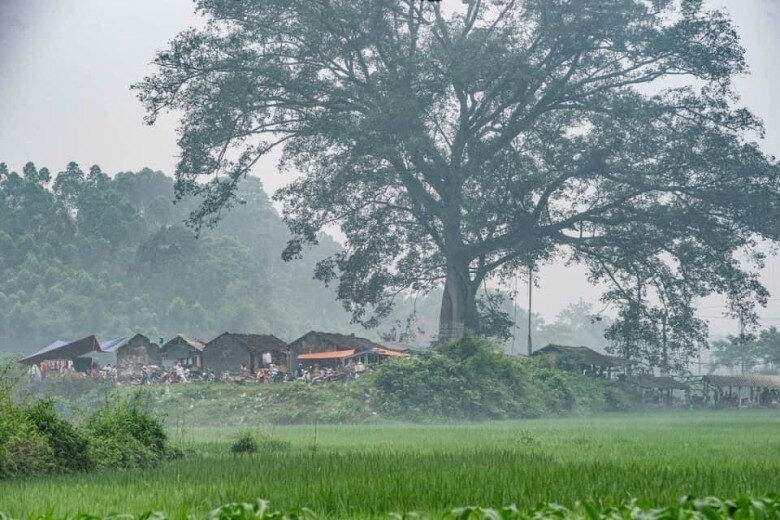
Notably, pure forest honey and spices like hạt dổi and mắc khén are highly sought-after items. These spices not only represent local specialties but also serve as essential ingredients that impart unique flavors to various ethnic dishes.
Beyond agricultural produce, the market showcases and trades handicrafts such as sedge mats, brocade bags, and bamboo-woven utensils. These items cater to both the daily needs of locals and serve as meaningful souvenirs for visitors.
Distinctive Cuisine
The cuisine at the Tuân Lộ Banyan Tree Market embodies the essence of the mountainous region, featuring rustic yet captivating dishes. Visitors can indulge in colorful five-color sticky rice, aromatic smoked buffalo meat, and com lam—traditional sticky rice cooked in bamboo tubes, imbued with the distinct flavors of the forest.
Grilled stream fish is a specialty not to be missed. Caught from nearby streams, the fish is marinated with simple spices and grilled over charcoal, served with mắc mật leaves, resulting in a memorable flavor.
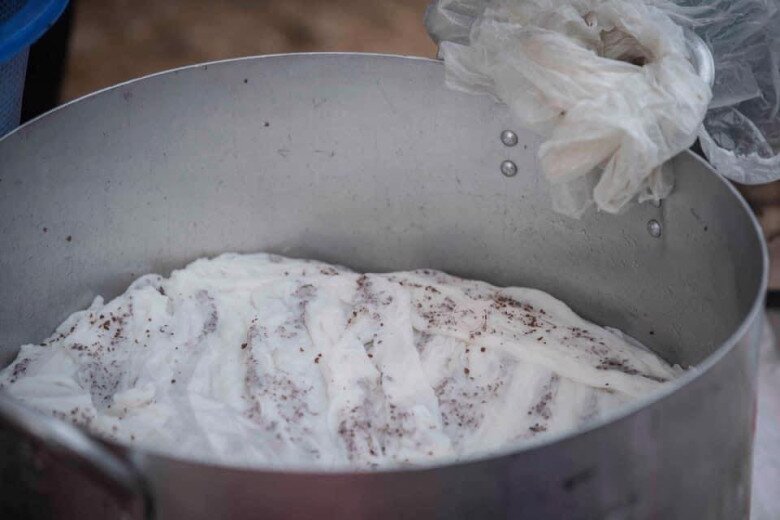
As you wander through the market, you’ll also come across street food delights such as bánh đúc nóng—a dish made from rice flour, served with a sweet and sour fish sauce and topped with crunchy roasted peanuts. Chè lam, a sweet treat made from glutinous rice flour, malt, and peanuts, is another popular snack among visitors to the market.
A Time Capsule Experience: Journeying Back Three Decades
Owing to its pristine beauty and rich cultural atmosphere, the Tuân Lộ Banyan Tree Market has earned the title of “Vietnam’s most beautiful periodic market.” It continues to captivate the interest of domestic and international travelers alike.
Visitors are drawn to the market not merely for shopping but also to immerse themselves in the indigenous culture. The market’s setting, nestled amidst a picturesque natural landscape and bustling with commercial activity, paints a distinctive rural tableau. This allure has attracted many photographers eager to capture its unique moments.
The natural light filtering through the banyan tree’s canopy, combined with the vibrant stalls and the genuine faces of highland dwellers, creates captivating portraits and landscapes imbued with ethnic cultural essence.
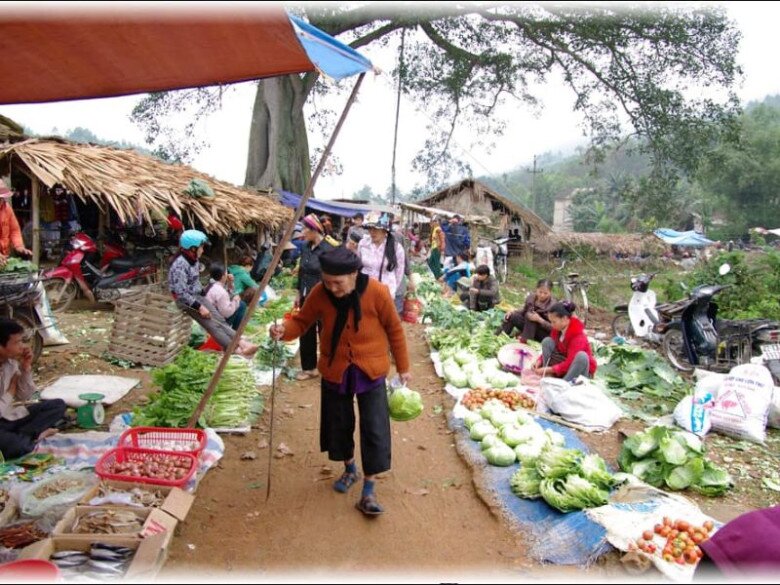
At the market, visitors have the opportunity to engage in various experiential activities, such as learning farming practices by harvesting vegetables or preparing meals alongside locals. These experiences not only bring joy but also foster a deeper understanding of the highland dwellers’ way of life and culture.
During festivals, the market organizes traditional folk games such as tug-of-war and stick pushing, along with performances of hát then and đàn tính—unique art forms of the Tay ethnic group. These activities contribute to a vibrant atmosphere and preserve traditional cultural values.
Another special experience is visiting the ancient banyan tree, the market’s symbol. Despite being partially damaged by weather conditions, the tree remains a significant spiritual emblem for the locals. Visitors can listen to the legend of the “walking banyan tree,” a folk tale explaining the phenomenon of the tree’s moving roots over centuries.
Practical Tips for Visitors
– Ideal Timing: For a comprehensive experience, visitors should arrive at the market early in the morning, preferably between 5 and 7 a.m., when the atmosphere is at its liveliest, and all goods are on display. The markets on the 2nd and 7th of the lunar month tend to be busier, offering a wider array of products.
– Shopping Tips: When shopping at the Tuân Lộ Banyan Tree Market, visitors should embrace the traditional culture of haggling gently. It is advisable to compare prices at several stalls before making a purchase.
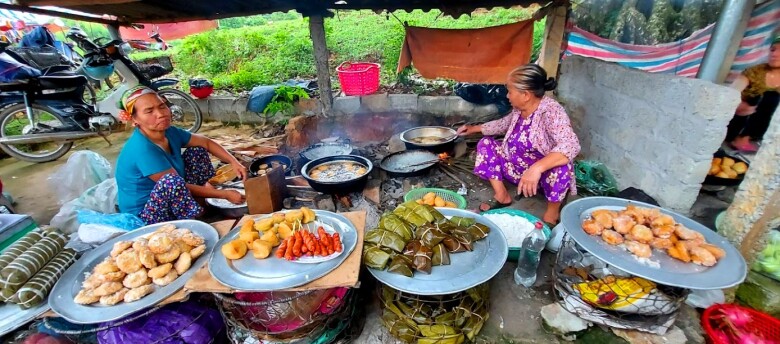
For local specialties like forest honey and smoked buffalo meat—popular choices for souvenirs—it is essential to carefully select and check for labels to ensure their authenticity and quality.
Another valuable suggestion is to take the time to chat with the elderly locals. Their stories will not only enrich your understanding of the region’s history and culture but also provide a deeper connection to the spiritual life of the highland dwellers.
Preserving Traditional Values
Amid rapid urbanization and the emergence of modern commercial channels, the Tuân Lộ Banyan Tree Market faces challenges in sustaining its operations and safeguarding traditional values. The recent Covid-19 pandemic also significantly impacted the market, resulting in a notable decrease in vendors and customers.
However, thanks to the local government’s efforts and the community’s commitment to preserving their cultural heritage, the market has retained its authenticity, avoiding excessive commercialization. This makes it an ideal destination for travelers seeking an unadulterated glimpse into Vietnam’s cultural richness, free from artificial embellishments.
The conservation and sustainable development of the Tuân Lộ Banyan Tree Market contribute not only to the preservation of Tuyên Quang’s vibrant cultural heritage but also serve as a unique promotional avenue for the province’s tourism among domestic and international travelers. This invaluable asset deserves recognition and emphasis in the region’s tourism development strategies.
The Tuân Lộ Banyan Tree Market, a melting pot of culinary delights and cultural essence from the highlands of Tuyên Quang, eagerly awaits visitors eager to explore and immerse themselves in the distinctive cultural ambiance of Northern Vietnam’s mountainous region.
Tuyên Quang boasts another breathtaking destination that travelers should not miss: the enchanting Na Hang.






























